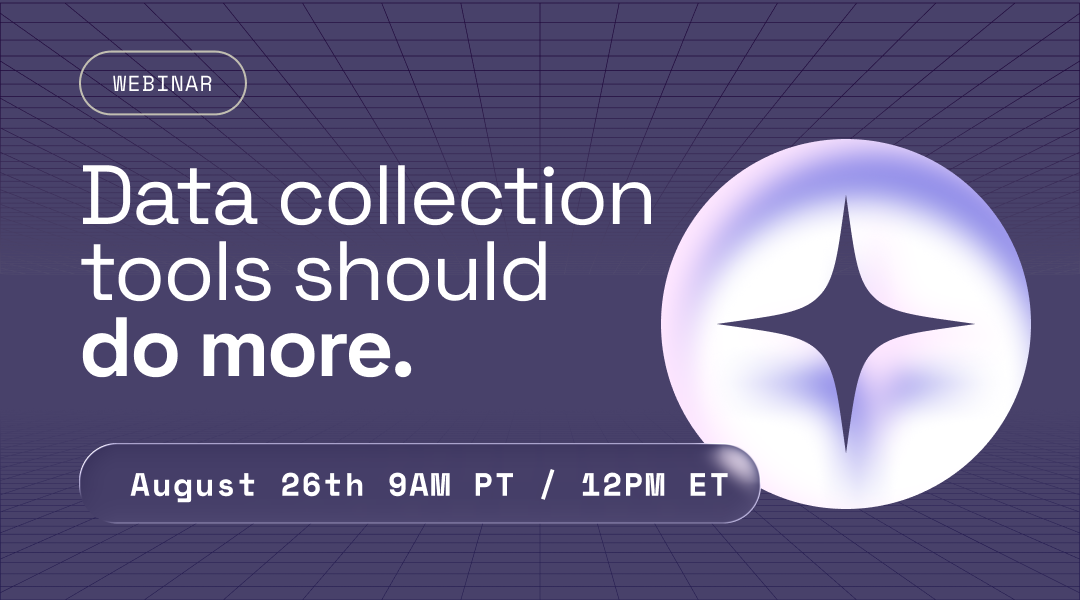Redefining Feedback Data with an Innovative, AI-Driven Approach
Today’s feedback data isn’t just about collecting opinions—it’s about unlocking real-time, actionable insights from every response. Modern platforms like Sopact Sense bring together quantitative and qualitative feedback, using AI to reveal trends, gaps, and opportunities at a scale and speed that manual analysis simply can’t match.
This article explores how organizations can move from basic surveys and fragmented feedback to a unified system where every piece of feedback—open-ended comments, survey scores, or document uploads—becomes part of a living data source for continuous improvement.
According to Gartner, organizations that actively analyze feedback data see a 25% faster improvement in customer or stakeholder satisfaction than those who do not.
What is Feedback Data?
Feedback data refers to the information gathered from stakeholders through various channels—surveys, interviews, forms, or even uploaded documents. This data can be structured (scores, ratings) or unstructured (comments, stories, suggestions), and provides critical insights for decision-making, program evaluation, and service improvement.
“Collecting feedback is just the start. The real value comes from analyzing and acting on it—quickly, and with context.” — Sopact Team
⚙️ Why AI-Driven Feedback Data Is a True Game Changer
Traditional feedback analysis is slow and fragmented—manual review, endless spreadsheets, missed themes. With AI-powered feedback data analysis, you can:
- Analyze all feedback—structured and unstructured—in seconds, not weeks
- Surface negative trends, highlight missing or incomplete responses instantly
- Collaborate in real-time, with stakeholders correcting or clarifying their feedback via unique links
- Move from “feedback collected” to “feedback actioned” with no manual bottlenecks
What Types of Feedback Data Can You Analyze?
- Open-ended survey responses
- NPS (Net Promoter Score) comments
- Uploaded PDFs or feedback forms
- Post-program or event evaluations
- Interview transcripts or focus group notes
- Grantee and participant stories
What Can You Find and Collaborate On?
- Spot gaps and missing answers in feedback
- Highlight key insights or recurring themes
- Score and verify whether standards are met
- Ensure mandatory report requirements are addressed
- Build auto-generated summary reports
- Collaborate with stakeholders on clarifications or next steps—all tracked over time
Modern feedback data tools make collaboration easy, turning every comment or response into a growth opportunity. By unifying all feedback sources, your team can learn, adapt, and improve—together.

Why is fixing feedback data critical for effective analysis?
Feedback is one of the most powerful tools for learning, adapting, and improving programs—yet most organizations fail to harness its full potential. That’s because the data they collect is fragmented, error-prone, and nearly impossible to use without weeks of manual effort. The result? Slow decision-making, inaccurate insights, and lost opportunities. This article unpacks why traditional feedback systems fail and how Sopact Sense enables organizations to build clean, continuous, and AI-ready feedback workflows from day one.
How does feedback data become a problem in traditional systems?
Most organizations collect feedback through separate systems: Google Forms, Typeform, SurveyMonkey, PDFs, spreadsheets, CRMs. While this seems fast and easy at first, the long-term cost is high. Each disconnected system creates isolated data that requires manual intervention to reconcile. Survey responses don't match CRM records. Typos, duplicates, and missing information run rampant. When it's time to analyze the data, teams spend days—if not weeks—just cleaning it.
This problem multiplies when you attempt longitudinal tracking. Who submitted the pre-survey? Did they complete the exit form? Was that Jane Smith or Jane Smythe? Without clean unique IDs and a relationship framework, there's no reliable way to stitch feedback data together over time.
What does Sopact Sense do differently with feedback data?
Unique Contact Objects for Stakeholder Tracking
Sopact Sense introduces a lightweight "Contacts" object, like a mini-CRM, that tracks each individual with a unique ID. This ensures that every piece of feedback—regardless of when or how it's collected—ties back to the right stakeholder. For example, a youth training program can track a girl from intake to mid-program to post-program with 100% continuity.
Relationships: The Anti-Duplication Engine
Instead of just sending surveys to email lists, Sopact Sense links contact objects to forms through relationships. This enables:
- One response per person per form
- Automatic deduplication
- Accurate longitudinal comparisons
- Seamless form-to-form data continuity
So, if you're collecting data on pre/post training confidence levels, you’ll know with certainty who said what and when—no more guessing.
Data Correction Made Simple
Every contact and form submission in Sopact Sense comes with a unique link. If there’s an error—say, someone entered "1000" as their age—you simply send them their personal correction link. No phone calls. No emails. No spreadsheets. The corrected data feeds back into the same system, maintaining data integrity.
How does Sopact Sense support real-time feedback loops?
Automated Clean Data Collection
Once forms and contacts are set up, Sopact Sense handles the rest. Stakeholders get pre-linked, deduplicated, validated forms. These are embeddable on your website, and responses flow in without error.
Continuous Feedback Capture
When new data is needed—mid-program feedback, follow-up questions, or missing details—teams can send targeted requests using versioned links. These updates populate the same contact record and same row in your database.
Built-in Intelligent Cell for Qualitative Analysis
Sopact Sense doesn’t just collect data; it interprets it. Its Intelligent Cell™ feature auto-analyzes open-ended survey responses and PDFs. It applies AI-driven rules to categorize qualitative data in real time, dramatically reducing manual coding.
For example, in a scholarship program, essays and attachments are instantly processed, themes extracted, and rubric scores applied—all within minutes of submission.
What can you build with Sopact Sense?
Use Case 1: Continuous Program Feedback Across Stages
A workforce development initiative runs a 6-month training program for women entering tech. It needs to track confidence levels, skill application, and job attainment at intake, midpoint, and post-completion.
Traditional Challenge: Data is stored across three surveys. Many participants enter slightly different names/emails. Some take only one or two forms. It’s unclear how many participants completed the full journey.
Sopact Sense Approach: The program creates a "Participants" contact object, links all three forms via relationships, and sends unique URLs. Each woman is tracked from start to finish. Open-ended responses are analyzed for themes like confidence and barriers. The data feeds into a dashboard showing individual and cohort progress.
Use Case 2: Feedback Loops in Application Processes
A grantmaker runs multiple rounds of funding and collects complex applications with essays, budgets, and letters of support.
Traditional Challenge: Each round is a new Google Form. Evaluators score applications manually. Corrections require email back-and-forth. It’s hard to compare applications across cycles.
Sopact Sense Approach: The team uses Sense to accept applications, connect responses to unique contacts, and auto-score essays with a rubric. Applicants who miss a field or have errors get auto-generated correction links. Every round's data rolls into the same contact record, enabling historical comparison across grant cycles.
Automating Feedback Data Collection and Analysis for Faster, Cleaner Insights
Collecting feedback data the traditional way—using Google Forms, storing files in folders, manually analyzing PDFs, and coding responses in ChatGPT—is not only inefficient but introduces risks: duplicate entries, poor data quality, and delayed decision-making. Most organizations spend 10–20 hours per cycle just preparing data, another 10+ hours analyzing documents, and many more hours interpreting open-ended feedback. That’s weeks of delay before action can even begin.
With Sopact Sense, that entire workflow is transformed into a single intelligent system that captures, analyzes, and connects data at the source. Every form, PDF, and comment is linked back to a unique contact with version-controlled, AI-analyzed inputs. This means your organization can collect better data, respond faster to feedback, and avoid losing critical insights or customer engagement opportunities.
Feedback Collection Strategy
This table helps teams understand the step-by-step workflow to build a fast, accurate, and automated feedback loop. Designed for program managers, evaluation leads, and grant administrators, this table guides implementation using Sopact Sense—removing the chaos of multiple systems and centralizing everything into a seamless process.
Compared to traditional workflows, where 5–15 documents must be manually reviewed and 3–5 prompts fed into ChatGPT per evaluation cycle, Sopact Sense eliminates 80–90% of that manual effort. And unlike regular survey tools, it enables real-time feedback loops and AI-based analysis that save dozens of hours in every reporting cycle.
Who this is for:
- Organizations running workforce development, education programs, grant cycles, or multi-step training
- Teams needing to track the same individual over multiple surveys or feedback points
- Evaluators and funders seeking real-time dashboards and audit-friendly records

What are the measurable benefits?
- 80% less time spent on cleaning data (Landing Page)
- 100% data match rate across forms using unique IDs
- Real-time analysis of qualitative and quantitative data
- Minutes to insights, not weeks of coding
- BI-ready exports for Power BI, Google Looker, Tableau
How does this enable AI readiness?
Most AI systems fail when the data is fragmented or full of errors. Sopact Sense ensures:
- Every contact is uniquely identified
- Every form submission is traceable and clean
- Every dataset can be joined, scored, and analyzed without human intervention
This makes your feedback data ready for advanced AI tasks like:
- Predictive modeling
- Impact forecasting
- Sentiment tracking
- Continuous learning from stakeholder journeys
Final Thought
By automating feedback workflows with Sopact Sense, organizations not only save dozens of hours each month, they also ensure data is clean, actionable, and ready for decisions. Rather than chasing spreadsheets and PDFs, your team can focus on outcomes—building trust, responding in real time, and continuously improving your strategy.









